 W
WAikenway Castle was a castle about 5 miles (8.0 km) north of Charlestown of Aberlour, Moray, Scotland, south of the river Spey.
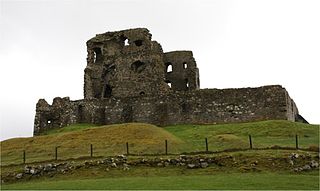 W
WAuchindoun Castle is a 15th-century L-Plan tower castle located in Auchindoun near Dufftown in Banffshire, Scotland.
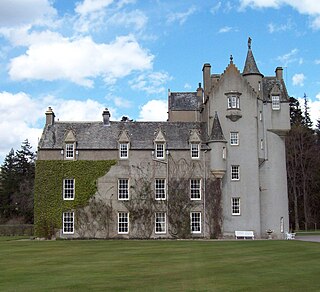 W
WBallindalloch Castle, known as the "pearl of the north", is a Scottish castle located in Banffshire, Scotland. It has been the family home of Macpherson-Grants since 1546.
 W
WBalvenie Castle is a ruined castle 1 km north of Dufftown in the Moray region of Scotland.
 W
WBrodie Castle is a well-preserved Z plan castle located about 3+1⁄2 miles west of Forres, in Moray, Scotland. The castle is a Category A listed building and the grounds are included in the Inventory of Gardens and Designed Landscapes in Scotland.
 W
WBurgie Castle is a 17th-century Z-plan tower house, about 3.5 miles (5.6 km) east of Forres, Moray, Scotland, south east of Burgie House.
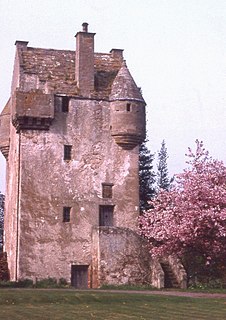 W
WCoxton Tower is a late sixteenth-century tower house in Moray, Scotland. Heavily fortified, it was built around 1590, with substantive repairs in 1635 and 1645, but its design is reminiscent of much older buildings. It has not been occupied since around 1867 except to house Canadian soldiers during the Second World War, but was renovated in 2001 to help protect the fabric of the structure, which is designated a Category A listed building.
 W
WCullen Castle was a royal castle about 0.5 miles (0.80 km) west of Cullen, Moray, Scotland, west of the burn of Deskford, and south of Seatown. The remains have been designated as a Scheduled Ancient Monument, accessible to the public. This is not to be confused with Cullen House or Castle of Cullen of Buchan. There is also a ruin of a Cullen Castle in County Waterford, Ireland.
 W
WDarnaway Castle, also known as Tarnaway Castle, is located in Darnaway Forest, 3 miles (4.8 km) southwest of Forres in Moray, Scotland. This was Comyn land, given to Thomas Randolph along with the Earldom of Moray by King Robert I. The castle has remained the seat of the Earls of Moray ever since. Rebuilt in 1810, it retains the old banqueting hall, capable of accommodating 1,000 men.
 W
WDrumin Castle is a ruined tower house near Glenlivet, Moray, Scotland. The castle is situated on a ridge above the junction of the Livet and Avon Rivers. It is a designated scheduled monument.
 W
WDuffus Castle, near Elgin, Moray, Scotland, was a motte-and-bailey castle and was in use from c.1140 to 1705. During its occupation it underwent many alterations. The most fundamental was the destruction of the original wooden structure and its replacement with one of stone. At the time of its establishment, it was one of the most secure fortifications in Scotland. At the death of the 2nd Lord Duffus in 1705, the castle had become totally unsuitable as a dwelling and so was abandoned.
 W
WDunphail Castle is a ruined 14th-century tower house, about 6.5 miles (10.5 km) south of Forres, Moray, Scotland, west of nearby Dunphail House, and east of the River Divie.
 W
WEarnside Castle was a 15th-century castle, about 4.5 miles (7.2 km) north west of Forres, Moray, Scotland, and north of Alves Wood. It may be known as Ernside Castle.
 W
WElgin Castle was a 12th-century castle built near Elgin, Moray, Scotland.
 W
WGauldwell Castle was a 13th-century castle, about 3.5 miles (5.6 km) north west of Dufftown, Moray, Scotland, north of the River Fiddich. Alternative names are Boharm Castle, Cauddwell Castle, Gallvall Castle and Goldwell Castle.
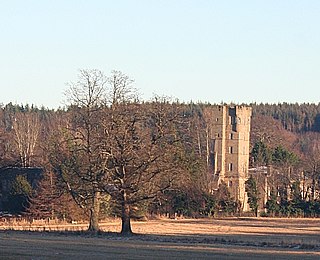 W
WGordon Castle is located near Fochabers in Moray, Scotland. Historically known as the Bog-of-Gight or Bog o'Gight, it was the principal seat of the Dukes of Gordon. Following 18th-century redevelopment, it became one of the largest country houses ever built in Scotland, although much has since been demolished.
 W
WHempriggs Castle was a 15th-century castle, about 5.0 miles (8.0 km) north east of Forres, Moray, Scotland, and about 3.5 miles (5.6 km) south of Burghead.
 W
WInverugie Castle was a castle, about 5.5 miles (8.9 km) north west of Elgin, Moray, Scotland, and 1.0 mile (1.6 km) south of Hopeman.
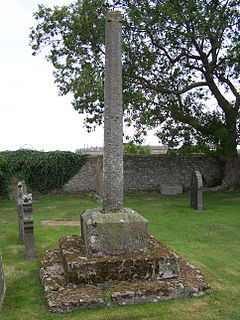 W
WKinneddar is a small settlement on the outskirts of Lossiemouth in Moray, Scotland, near the main entrance to RAF Lossiemouth. Long predating the modern town of Lossiemouth, Kinneddar was a major monastic centre for the Pictish kingdom of Fortriu from the 6th or 7th centuries, and the source of the important collection of Pictish stones called the Drainie Carved Stones. The Kirk of Kinneddar was the cathedral of the Diocese of Moray between 1187 and 1208, and remained an important centre of diocesan administration and residence of the Bishop of Moray through the 13th and 14th centuries.
 W
WMilton Tower is a ruined castle in Keith, Moray in Scotland. Built and remodelled over several centuries, it was started around 1480 for George Ogilvie, and served as a seat of the Ogilvies, who had succeeded the Abbots of Kinloss as the feuars of the district after the Scottish Reformation. Renovated by Margaret Ogilvie in 1601, the tower passed by marriage into the Oliphant family in 1707, but was neglected and gradually fell into disrepair after 1715. It was finally abandoned in 1829, and much of the stone that made up the fabric of the building was removed for use elsewhere.
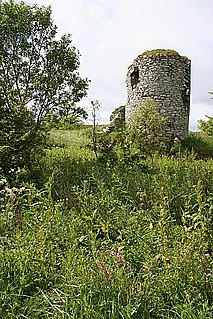 W
WPitlurg Castle was a 16th-century keep, about 3.5 miles (5.6 km) south of Keith, Banffshire, Scotland, north of the Burn of Davidston, at Mains of Pitlurg.
 W
WSpynie Palace, also known as Spynie Castle, was the fortified seat of the Bishops of Moray for about 500 years in Spynie, Moray, Scotland. The founding of the palace dates back to the late 12th Century. It is situated about 500m from the location of the first officially settled Cathedral Church of the Diocese of Moray, Holy Trinity Church in present-day Spynie Churchyard. For most of its occupied history, the castle was not described as a palace — this term first appeared in the Registry of Moray in a writ of 1524.